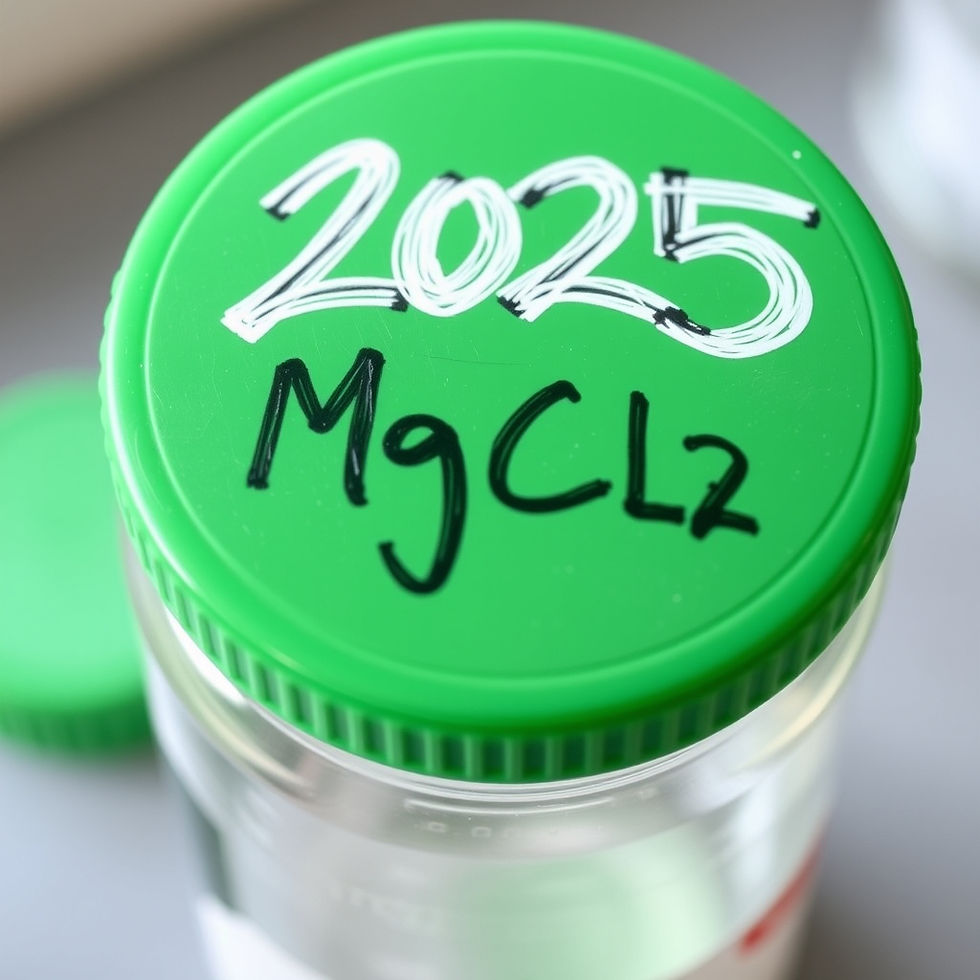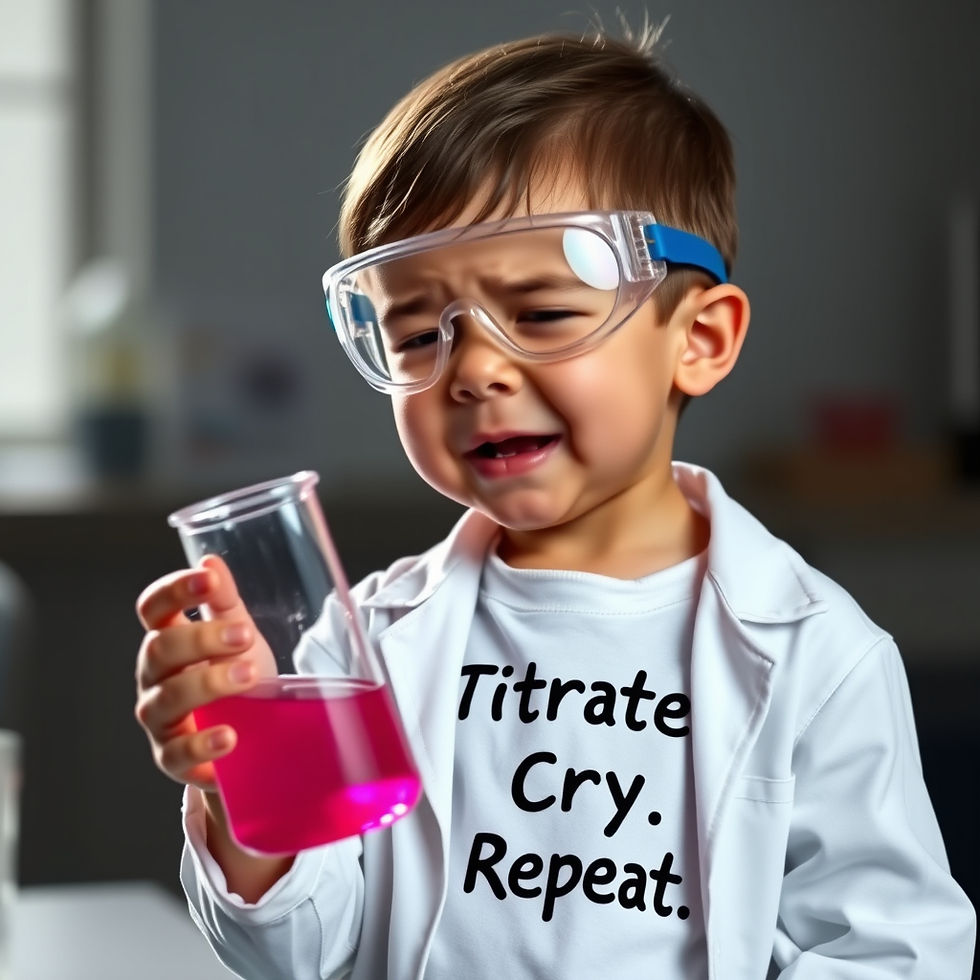End the year with a bang: pyrotechnic lab for chemistry
- Brennan Koch
- May 16
- 4 min read
Updated: Jul 22
End the Chemistry School Year with a Bang!
Every year, kids always ask, “Are we blowing stuff up today?” My answer is always, “We will on the last lab of the year.” Here is how I conduct my pyrotechnic lab on that special day. Please note: If you don’t feel comfortable with these demonstrations, or if your school isn’t comfortable with them, I advise against proceeding.
Making Chinese Gun Powder
The main activity of the lab involves each student making 10 grams of Chinese gun powder. This recipe burns more like a fountain and less like a bomb. The students have fun crafting the gunpowder and then loading it into creative fountain shapes. Finally, they watch the fountains burn on a board outside. Here are the materials and method:
7.5 g potassium nitrate
1.5 g charcoal
1.0 g sulfur
To begin, have the students grind the potassium nitrate into a very fine powder. Next, mix it thoroughly with the charcoal and sulfur until the mixture is even. That’s all there is to it!
After preparing the gun powder, students create fun shapes using aluminum foil to hold it. This year, we made a cannon, a unicorn with fire shooting out of its rear, an airplane, an elephant with a flaming trunk, and many other random shapes. Some kids insisted, “I can’t do anything artistic.”

Students attach a fuse that sticks directly into the gunpowder. The powder doesn’t need to be exposed to the air, as long as the fuse reaches. I purchase rolls of “cannon fuse” every year from the local fireworks stand.
Once everybody is ready, we go outside to light the fountains one at a time on a piece of plywood. Pro-tip: Use plywood so the fireworks don’t melt into the asphalt in the parking lot. Don’t ask me how I know!
Nitrogen Triiodide
After lighting their fountains, I perform a nitrogen triiodide demonstration. This touch-sensitive crystal explodes with the sound of a gunshot when touched with a feather. Timing is essential for this demo. Nitrogen triiodide is more stable when wet but highly unstable when dry.
Be sure to prepare your batch a couple of hours before class so it has enough time to dry. This year, only one-third of my chemistry classes got to see the demo. I conduct this experiment outside and store it under a large garbage can. However, due to windy conditions, it went off on its own twice, preventing the kids from hearing it.
To make nitrogen triiodide, take some solid iodine crystals. I use just enough to barely cover the bottom of a 250 mL beaker (about 60%). Cover the crystals with 6M ammonium hydroxide (ammonia). Let it sit for 15-20 minutes, stirring occasionally. I perform this in a fume hood for safety.
I use a coffee filter to filter off the liquid from the mixture. To do this, I attach three filter papers to rings on a ring stand in a tower formation. Each filter paper gets smeared with the nitrogen triiodide mixture. Remember to wear gloves, as it stains HORRIBLY! Set the filter papers outside to dry.
Be aware that the paper towels and coffee filters you use to clean up will dry in the trash can and potentially explode later. I warn my students, and it turns into a fun game as they clean up their lab, hoping their trash makes the garbage can pop!

Once the mixture has dried sufficiently, carefully touch the bottom filter paper with a feather attached to a meter stick. You will hear an explosion and see a cloud of purple gas. The gas consists of elemental iodine. Remember, this demo should only be conducted outside as it stains everything!
Thermite
To conclude the day, I like to prepare 100 grams of thermite. I mix 75.0 grams of iron (III) oxide with 25.0 grams of powdered aluminum, ensuring they are mixed thoroughly. I buy little terra cotta flower pots from the garden store to conduct this demo. I tape the hole in the bottom shut and place the thermite mixture inside the pot.
Next, I use a ring stand to hold the pot outside. I arrange the pot over a one-gallon metal coffee can filled with dry gravel. This setup catches the molten iron produced during the reaction.
I prefer to maintain a safe distance during the reaction, so I perform a secondary reaction on top to ignite the thermite. I create a small divot in the thermite and fill it with potassium permanganate powder, then drizzle some glycerin on top. This reaction takes about 30 seconds to 1 minute to occur, allowing me enough time to retreat.
I instruct the kids to stand back a long distance. They wait for the puff of white smoke, which indicates the reaction of the potassium permanganate and glycerin. Once that smoke occurs, the thermite will explode with glorious sparks and molten iron flowing out of the bottom of the pot onto the gravel can.
After the reaction, I let the kids approach to look at the hot iron. The heat and light emitted feel almost like staring at the sun. The kids think it's pretty cool!
With that, we have finally “blown something up” in chemistry. The kids are happy, and I've managed to tie each demo to specific review topics. Yes, this lab and its demonstrations involve dangerous elements. I take particular precautions, and the kids handle everything well. It’s a fantastic way to end the year with a bang!
Want to start the next school year with a bang? Try using curriculum-centric games from Stoich Decks. We now have all four of our games in a bundle that will serve a room of 30 kids. Check them out!





These are so fun! Thanks for sharing!!